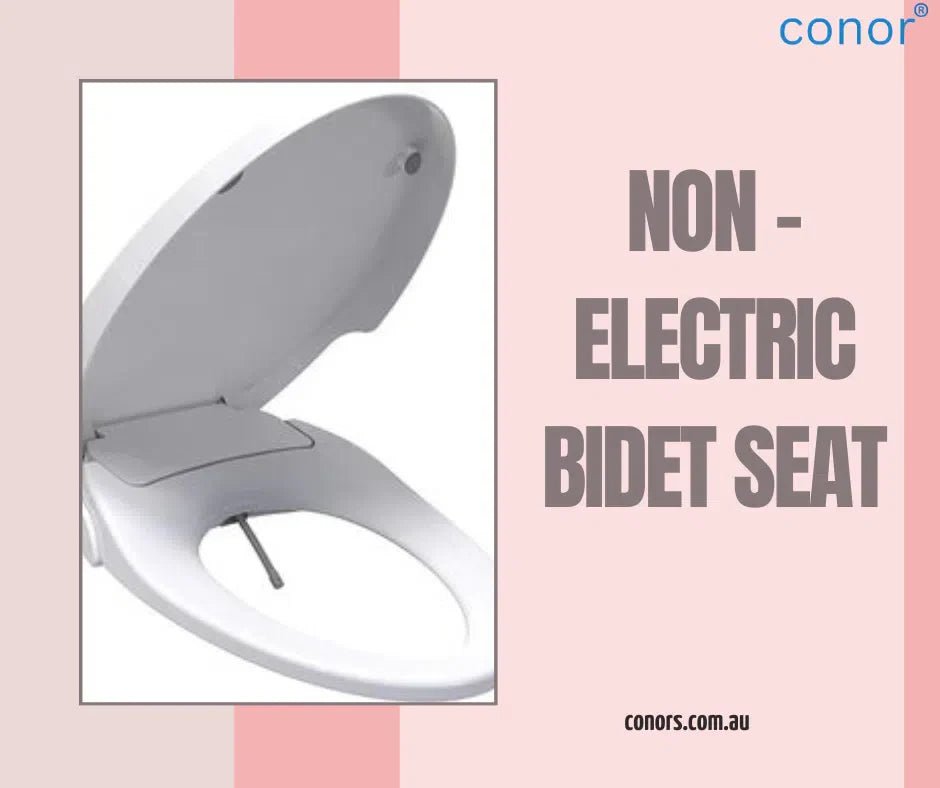
The evolution of Bidets: From manual to non-electric bidets
Share
The evolution of Bidets: From manual to non-electric bidets: Bidets were once considered a luxury item, but they are now more affordable and accessible than ever before.
Bidets
Bidets is a bathroom fixture designed for personal hygiene. It is used to wash gentle areas after using the toilet. Nowadays there are various forms of bidets like standalone and attachments. however, the concept of bidets started in the 17th Century.
The Evolution of Manual Bidets
During the early 18th Century, manual bidets were introduced as an evolution in personal hygiene. These early bidets require manual operation, with users controlling water flow through foot pedals.
Limitations:
While manual bidets have been part of hygiene practices for centuries, they do come with certain drawbacks:
Limited Functionality:
Manual bidets come with basic features and lack advanced functionalities such as heated seats, air dryers and more.
Dependency on User’s Strength:
Manual bidets require physical effort, which was impossible for individuals with limited strength or mobility issues.
Less Precise:
Adjusting water pressure and temperature was an impossible task which made it less precise in terms of comfort.
Potential Messiness:
Using a manual bidet requires careful aim and control, which might result in splashing and mess, especially for individuals unfamiliar with its operation.
Hygiene Concerns:
Due to the manual nature of the operation, there is a risk of cross-contamination if proper cleaning protocols are not followed.
The Rise of Bidets
As technology advanced, so did bidets. Bidets slowly started gaining features like adjustable water temperature and pressure. These devices were still manually operated so individuals with mobility issues were still a concern.
The Era of Electric Bidets
In the late 20th century became the era of electric bidets where these bidets were equipped with features such as heated seats, air drying and customisable water sprays. However, they require electrical connections and use a large amount of energy
Going Green: Non-Electric Bidets
In recent years, Spotlight has been given to non-electric bidets, an energy-saving and eco-friendly solution for a better tomorrow. These devices eliminate the need for electricity by providing in-built water pressure.
Key Features–
Non-electric bidets are seen to overpower electric bidets due to their many features such as:
Environmentally Friendliness
Non-electric bidets are seen to use less energy than electric bidets.
Cost Effective
These bidets have lower upfront costs and do not contribute to increased electricity bills which makes them a budget-friendly option.
Low Maintenance
Fewer components make it easy because of lower maintenance requirements.
Water Conservation:
Non-electric bidets use water efficiently, contributing to water conservation efforts.
Conclusion: From manual to non-electric bidets
From manual bidets to advanced eco-friendly non-electric bidets of today, the evolution reflects our ongoing battle between seeking comfort and bidets. Although bidets have made progress, there is still room for improvement. However, still bidets are gaining popularity worldwide, which makes them an important part of daily personal care.
FAQs: From manual to non-electric bidets
Can non-electric bidets be used during power outages?
Yes, non-electric bidets continue to function during power outages as they rely solely on water pressure.
Do non-electric bidets require a water connection?
Yes, non-electric bidets require a water connection to operate.
Can non-electric bidets be used in regions unfamiliar with bidet culture?
Yes, they are user-friendly and can be used in regions unfamiliar with bidet culture.
